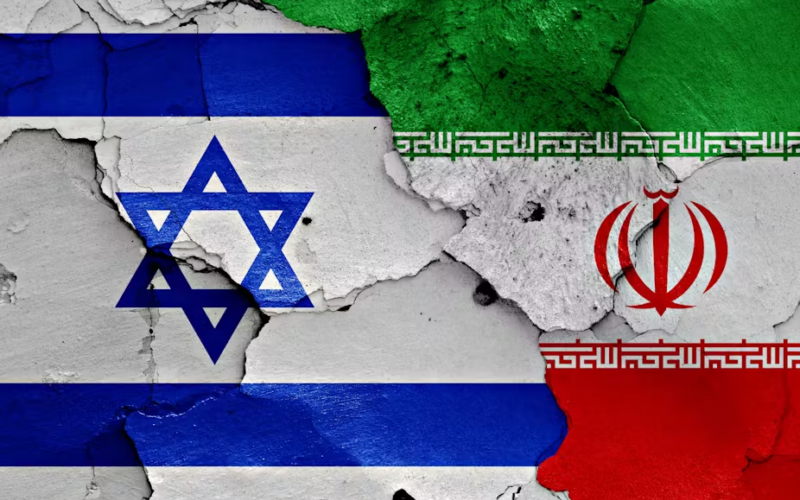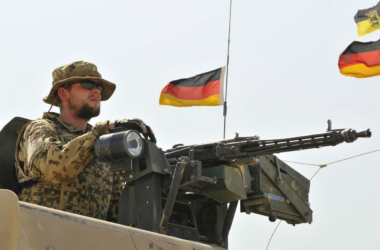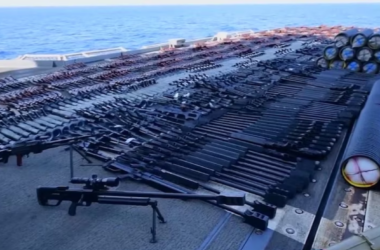The recent assassination of Hamas leader Ismail Haniyeh in Tehran has heightened tensions between Iran and Israel, setting the stage for a potentially intense aerial conflict. As both nations prepare for a possible long-range air war, the disparities in their military capabilities reveal a broader narrative about power and resilience in the region.
Iran’s Strategic Limitations
Iran, despite its significant investment in missile technology and drone warfare, faces considerable challenges in a potential air conflict with Israel. The Iranian air force, with 37,000 personnel, operates a fleet of outdated aircraft, including a mix of Russian-made Sukhoi-24s, MiG-29s, and a few older US models. This reliance on aging technology underscores the difficulties Iran faces in maintaining a modern, effective air force.
Iran’s drone arsenal, estimated to number in the low thousands, represents a substantial part of its offensive capability. These drones are designed for both surveillance and direct strikes, enhancing Iran’s ability to project power despite its air force’s limitations. Additionally, Iran’s extensive stockpile of over 3,500 surface-to-surface missiles, some with substantial warheads, provides it with a means to strike at distant targets, including Israel.
For defense, Iran relies on a combination of Russian and domestically produced systems, including the S-300 anti-aircraft system, which provides long-range missile defense. The Bavar-373 and Sayyad defense systems add to Iran’s multi-layered defense strategy. However, the effectiveness of these systems against Israel’s advanced air and missile defense capabilities remains a significant question.
Israel’s Advanced Military Edge
In contrast, Israel boasts a highly sophisticated air force and defense infrastructure, supported by extensive US military assistance. The Israeli air force operates hundreds of F-15, F-16, and F-35 jet fighters, equipped for a range of missions from air superiority to precision strikes. Israel’s ability to deploy these aircraft effectively has been demonstrated in various conflicts, including recent engagements involving Iranian drones and missile strikes.
Israel’s aerial capabilities are further enhanced by its advanced drone technology, including the Heron and Delilah systems. These drones, capable of long-duration flights and precision strikes, enable Israel to conduct operations well beyond its borders. The country’s multi-layered missile defense system, developed with US collaboration, is a critical asset in countering potential Iranian attacks. This system includes the Arrow-3 for intercepting ballistic missiles in space, the David’s Sling for mid-range threats, and the Iron Dome for short-range projectiles.
The Israeli air force’s use of repurposed Boeing 707s as refueling tankers extends the range of its operations, allowing for long-range strikes, as evidenced by recent attacks on targets near Yemen. This capability, combined with Israel’s extensive missile defense systems, provides it with a significant strategic advantage.
The Broader Implications
The stark contrast between the air and missile capabilities of Iran and Israel highlights a critical imbalance in the region. While Iran’s investment in missile and drone technology reflects its strategic priorities, the outdated nature of its air force and defense systems poses limitations in a direct conflict with a technologically superior opponent like Israel.
For the Palestinians, particularly in Gaza, the ramifications of this power imbalance are profound. Israel’s advanced military capabilities and robust defense systems contribute to its dominance in the region, while Palestinian territories continue to face severe limitations in their ability to counter or defend against such advanced technology. This disparity not only affects the immediate military dynamics but also shapes the broader geopolitical landscape in the Middle East.
As tensions continue to escalate, the international community must consider the implications of these power dynamics for regional stability and the humanitarian impact on those caught in the crossfire. The unequal capabilities of Iran and Israel in an aerial conflict underscore the need for a renewed focus on diplomatic solutions and efforts to address the underlying conflicts that drive these tensions.








